
Septic systems provide an extremely valuable service, and we rarely ever think about them. When they leak, however, that leak the only thing we can think about. Our water use becomes restricted inside our homes, and outside, our septic tank is leaking into the yard and endangering the environment and health of the community. Needless to say, if this plumbing crisis arises, we want to be able to deal with the situation in a calm, efficient and well-informed manner. In this article, we'll cover the workings of a septic system, the many ways to identify a malfunction and what to do in the event of a leak.
How Does a Septic System Work?
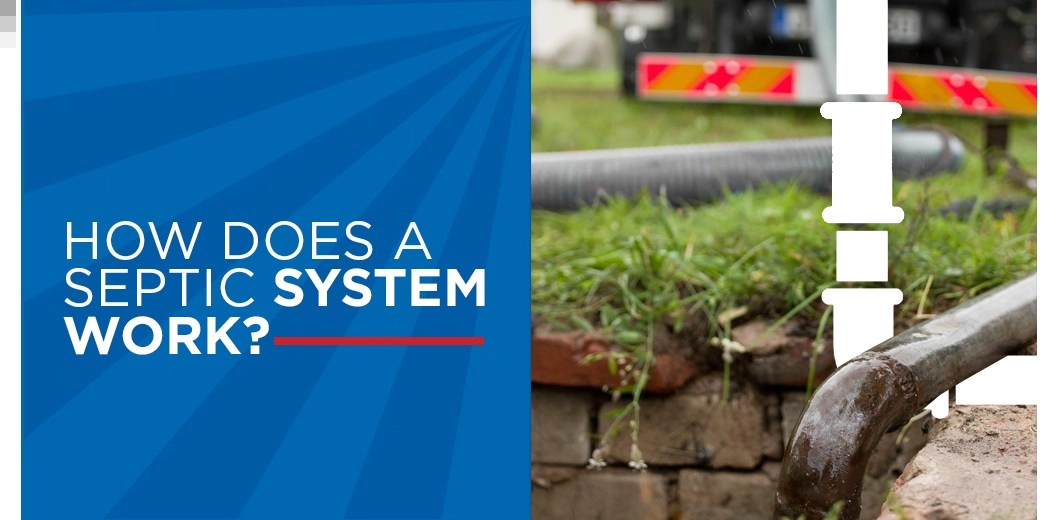
While many different septic system designs exist, their basic function is the same. They are all designed to convert the blackwater and graywater from households into a less contaminated effluent that can blend with the groundwater in a way that does not negatively impact the environment or human health.
Septic systems can be either passive or active, although the vast majority of residential septic systems are passive. Passive systems consist of three primary components:
- Inlet pipe: Household wastewater travels through this pipe on its way to the septic tank.
- Septic tank: This container biologically degrades organic solid waste.
- Absorption component: This is typically a gravity drain field.
When you flush your toilet, the wastewater goes down an inlet pipe and into a septic tank. When the wastewater enters, an equivalent amount of effluent gets displaced in the tank and exits to the drain field. Eventually, this effluent gets absorbed into the ground.
The septic tank contains many anaerobic bacteria, which feed on the solid organic material found in the wastewater. The quantity of bacteria depends on how much organic material is in the tank, so when the tank is low, the number of bacteria decreases, and when water usage is higher, the quantity of bacteria increases.
Septic tanks are designed to maintain a certain minimum water level so that the bacteria don't die out. Without this feature, the tank could easily go empty when the house is vacant, such as when a family goes on vacation, and no water is being used.
Anaerobic bacteria are slow acting, so it is critical to maximize the amount of time that the wastewater is in contact with the bacteria in the tank. The time is known as the "holding time" and can be defined as the length of time from when the wastewater enters the tank until it flows out.
Generally speaking, septic tanks are meant to hold wastewater for around two days. During this period, the bacteria break down the solid organic material found in the wastewater, reducing the strength of the material by roughly 40 percent. As the amount of water used by the household varies, the volume of wastewater that flows through the tank increases or decreases proportionately. This, in turn, determines the length of the holding time and how much processing occurs in the tank.
When the wastewater leaves the tank, the effluent, which now contains around 60 percent of its original solid material, travels to the drain field and carries along with it the anaerobic bacteria. In the drain field, the anaerobic bacteria continue to treat the effluent, removing much of the organic material that remains before the effluent blends in with the groundwater.
Signs of Septic Tank Problems
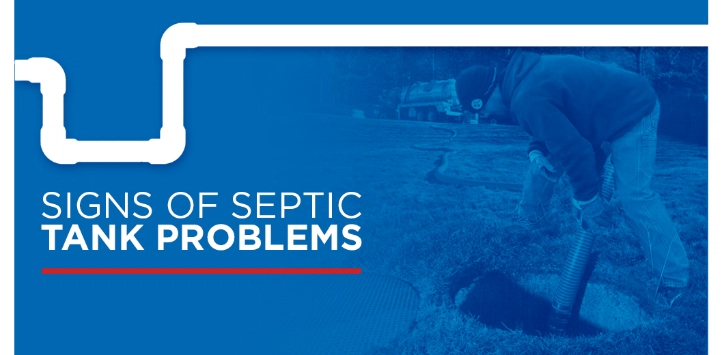
Septic tanks are susceptible to leaks and other types of damage, and these issues are often accompanied by warning signs such as odd smells, abnormally lush vegetation and overflowing toilets. Both new and old systems can experience problems, and a system failure can suddenly occur if a new family moves into the house, as their cooking, laundry and showering habits are often different from those of the previous residents.
Here are some common warning signs of a malfunctioning septic system:
1. Foul Odor
If you smell sewer gases, this may mean that one of the system's lids is either damaged or out of position. This could be either the lid to the filter access port or septic tank riser. These sewer gases could also be escaping from the tank body itself, meaning that the tank body may have cracks or holes.
You may notice this for only several minutes or for long periods. Try to figure out where exactly the odors are the strongest. Is it near the tank itself, the drain field or from the next door neighbor's tank? Keep in mind that this odor may be coming from the drain field, and it does not necessarily mean that your tank is damaged.
2. Lush Vegetation
Lush vegetation can be another warning sign of a septic tank leaking. It may also mean that the system is overflowing or that a nearby pipe has been damaged or somehow come loose. If your drain field or filters are clogged, this may cause a soggy area to form in the area around the drain field or the tank, which in turn will cause more vegetation to grow.
3. Soggy Yard
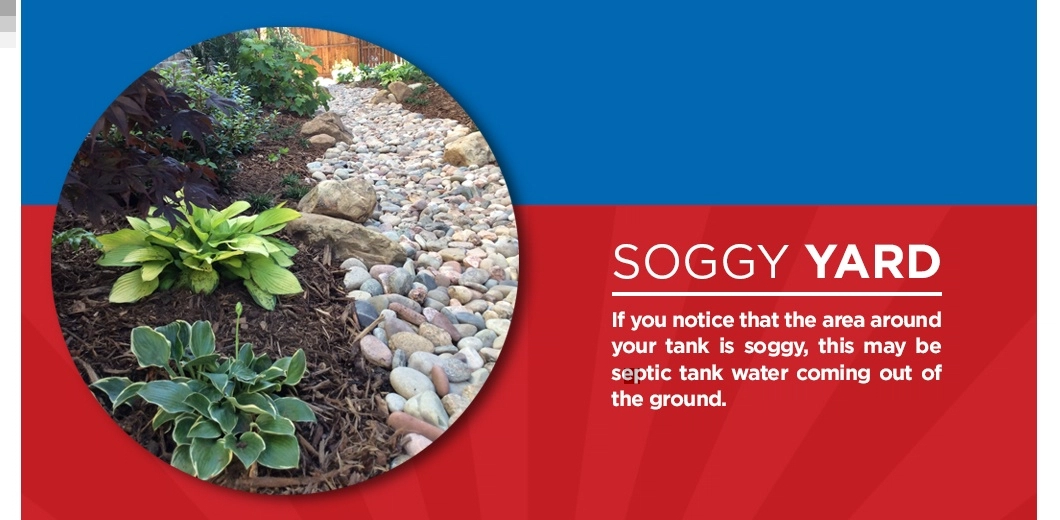
If you notice that the area around your tank is soggy, this may be septic tank water coming out of the ground. Make sure to rule out your sprinkler system first, though, as this can also cause areas of your yard to become soggy.
4. Standing Water Around Septic Tank
When soil is exposed to wet conditions over long periods, it will often compact. If there is a leak in your tank, water coming from the leak could cause the nearby soil to settle and drop down as a result. This is especially likely if the area surrounding your septic tank consists of loose backfill that was dumped there after the septic tank was placed in the hole. When soil settles and drops down, this allows water from rainfall and sprinklers to collect there.
It should be noted that foul odors or wet areas do not necessarily mean a leaking or damaged septic tank. The sewer line leading to the septic tank may also be the source of the problem. These sewer lines are typically laid in trenches, and if the line breaks, the trenches may be allowing the wastewater to travel towards the tank.
5. Toilets or Sinks Are Backing up or Slow to Drain
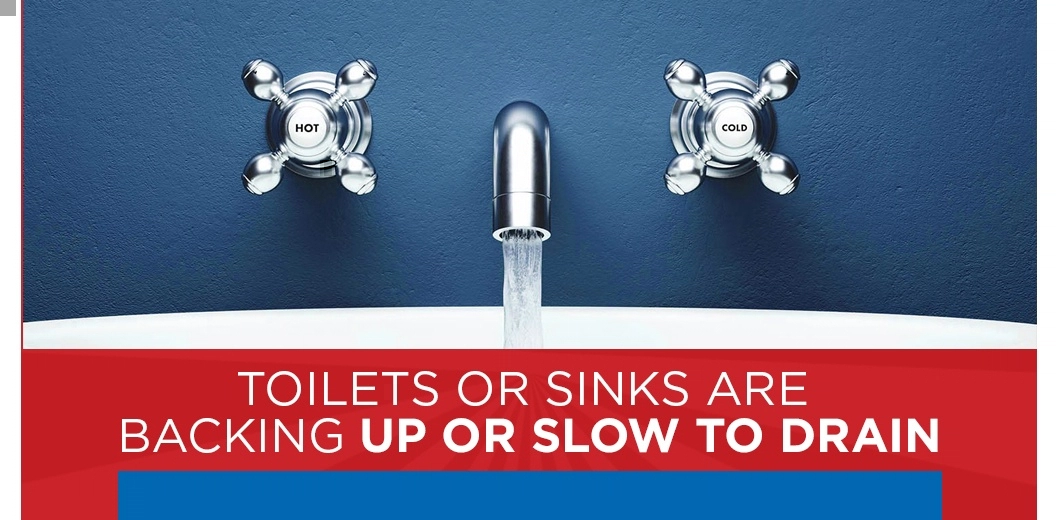
These occurrences are sometimes a warning that the tank has been damaged. Sometimes the roots of trees block and damage the area where effluent flows out of the tank. In other instances, this is due to a collapsed baffle, which can also create blockages and cause the drain field to fail. Tank or sewer lines can also back up as a result.
Backing up can also be a result of a tank that is too full of scum and sludge. It is common for plumbing companies and technicians who inspect tanks to use a "sludge judge" to help figure out how much scum, sludge and effluents are in a septic tank. If the scum and sludge together comprise more than a third of the entire tank volume, this may cause the tank to fail, and it will most likely need to be pumped.
6. Alarm Sounds
If you own a newer septic system, there is probably a built-in alarm that will alert you of problems. These alarms either emit a beeping noise or flash a red light, and they can be located either inside or outside of your house.
Why Is My Septic Tank Leaking?

An overflowing septic tank can be the result of several factors, namely a failure to properly maintain the system, the presence of cleaning products in the wastewater, environmental factors and design flaws.
1. Insufficient Maintenance
As wastewater goes through the tank, nonbiodegradable materials settle on the bottom of the tank immediately, as does some solid waste. With time, the sludge level rises. It is recommended that septic tanks are pumped every three to five years to prevent an overflow. Of course, how frequently the tank is pumped depends on both the size of the tank and how much wastewater it handles. For instance, a tank that holds 1,000 gallons in a household of four people should be pumped every two and a half years. If a four-person household has a 1,500-gallon tank, on the other hand, they will only need to pump out the tank every four years or so.
2. Cleaning Products Are Killing the Useful Bacteria
As mentioned above, the bacteria found in a septic tank help break down the wastewater before it continues to the drainage field. If the levels of bacteria in the tank are insufficient, the solids will not break down, and they will start to accumulate at a faster rate than usual. This may lead to the tank overflowing or the clogging of drainage pipes or trenches.
The levels of bacteria can drop as a result of cleaning products present in the wastewater. Any cleaning products that are toxic to human beings can also kill off the bacteria that are necessary to maintain a septic system. For this reason, it is crucial that cleaning products such as bleach, toilet cleaners and disinfectants do not make their way into the waste piping.
3. Damaged Pipes Between Tank and Drainage Field

As wastewater that has been broken down leaves the septic tank, it travels through several pipes and into a drainage field. If the pipes in this area are damaged, this can also lead to an overflow. Sometimes tree roots manage to grow through the pipes, which may cause the pipe walls to collapse and prevent proper drainage. Overflow can also result from clogged pipes.
4. Poorly Designed System
Overflow occasionally results from a system that has been designed improperly. Drainage pipes typically require a 1 to 2 percent slope so that the wastewater can drain properly. If the slope of the pipes is too shallow, the wastewater will not flow as needed, and the pipe must be replaced.
Solutions for a Leaking Septic Tank
When you know that you've got a leak on your hands, how do you handle it? Here are our top tips:
1. Do Not Pump Water Out
We will start with what you absolutely should not do — do not pump water from your tank into your yard. This poses a severe health hazard, as children and pets could walk through it, and it could make its way into a stream. This, in turn, could lead to waterborne disease, which can be quite deadly and spread rapidly from person to person.
2. Determine the Exact Location of Your System
When a tank is flooded, water will come through any opening, including the inlet and outlet pipes, the manhole cover or the cover to the tank. This then may fill up the tank with groundwater, which may carry with it soil and silt. If this happens, floating waste that is already inside the tank, such as scum, will then rise and may plug up the inlet and outlet pipes. Water from the drain field may also make its way into the tank.
You should find out exactly where the tank and drain field are on your property. If you are not sure, call the health district office in your area. They may have files containing information on the installation of your septic system. Find out the depth of your drain field as well as the depth to the top of your tank. You can measure the depth down to the top of the tank by sticking a pointed metal rod into the ground there. Most tanks are just two to three feet down from the surface.
3. Inspect for Damage
Inspect around the septic tank and drain field for any indications of damage. Common indicators are things like holes in the soil or soil settling. If you see any signs of damage, hire a licensed professional to come and inspect your system. Try to avoid using heavy machinery near the drain field or tank while the soil is soaked.
4. Measure the Depth of the Groundwater
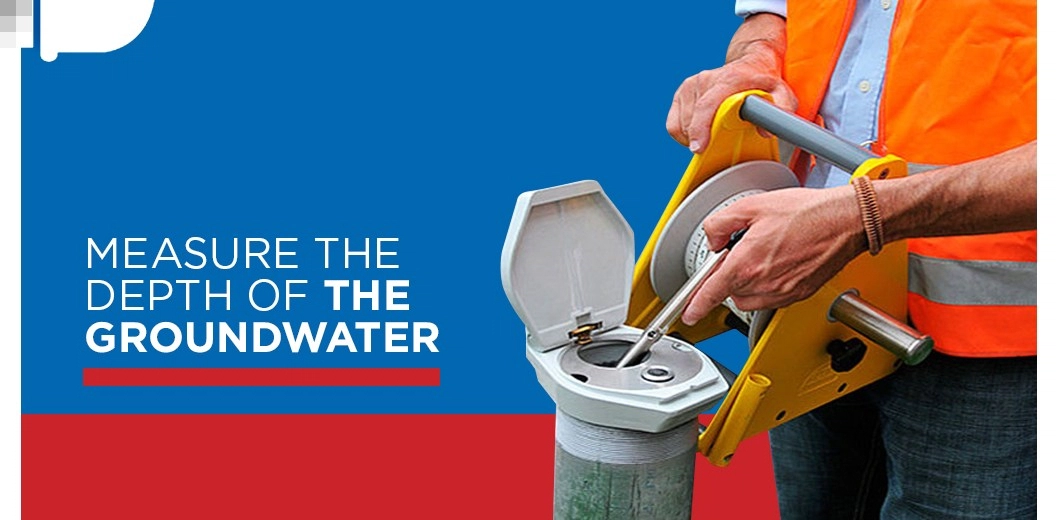
Measure the groundwater depth around the tank and the drain field. You can do this with a soil probe, or you can dig a hole using an auger. Do this within 10 feet of your tank and approximately 20 feet from the drain field. If you determine that the top of the tank is at least 3 feet above the water table, but the drain field remains saturated or flooded, then use your tank as a holding tank.
In this case, you should have the tank pumped, but make sure to leave at least 50 percent of the volume in the tank. If you remove any more, because of the water around the septic tank, the tank may want to float upward, which may damage the connecting pipes. While the tank is being pumped, water may enter the tank from the drain field and the house. The technician doing the pumping should make sure that the outlet pipe is not blocked.
With the exception of a mound system, the majority of drain fields are located 2 to 4 feet below the surface of the ground. It will be a good while before the groundwater recedes down to the bottom of the drain field. It could take anywhere from a week to several months. To avoid causing damage, regularly monitor the water table depth around the drain field.
5. If You Have a Mound System, Turn off the Power
Above-ground septic tanks with a mound for infiltrating wastewater often feature a lift station. If your electrical control box is surrounded by water, absolutely make sure you've turned off the power before touching it. Then, open up the cover and let it dry out. However, before turning on the control box, get a licensed electrician to examine the components and see if they are safe to handle. If your pumping chamber and septic tank are separate, then make sure you get the two pumped out at the same time.
Because the majority of the mound is above the ground, it will normally dry out more quickly than a drain field underground. However, you should still regularly check the water table depth around the mound. You may use your septic system as long as the water table is at least a foot below the surface of the ground and the pump chamber and tank have been pumped.
6. Reduce Water Use

When the septic system can be used again, it is helpful for the household to reduce its water use. Make sure that no sinks or showers are dripping and that no toilets are running. Even if a faucet drips only one drop every 15 seconds, over time this can add up to a large volume of water in the septic tank. If any fixtures are leaking, get them repaired as soon as you can.
The water from your basement sump pump should not go into the septic tank. Also, make sure that it does not drain anywhere near the drain field area. Water from roof gutters should also be directed away from the drain field.
Try to minimize how often you flush the toilet, go to a laundromat to wash your clothes, decrease how often you bathe and only use the dishwasher if it is full.
Try to use common sense when reducing your water use. The drain field was only made to handle the amount of water that normally comes from your home. If the water table is high around the drain field, the drain field becomes limited in its ability to handle the water from your house.
7. If You Continue to Experience Problems, Hire a Licensed Professional
If you're still having plumbing issues have the water table has returned to normal levels, the septic tank or drain field may have been damaged. When the groundwater is high, setting and shifting can occur, and this can affect the septic tank as well as the drain field's distribution system. The septic tank's inlets and outlets can also become blocked as a result. If any of these things happen, contact a septic system installer or licensed septic tank pumper.
Schedule a Plumbing Service with Mr. Rooter of Greater Syracuse Today
One thing this article has not taught you is how to fix a leaking septic tank. That is because it's best if you leave this difficult and potentially hazardous task in the hands of professionals. If you're a homeowner or business owner in need of septic services the greater Syracuse, N.Y., area, Mr. Rooter Plumbing of Greater Syracuse is the service you want to repair your septic system.
With Mr. Rooter, you get the best of both worlds — we have both the abundant resources of a national chain and the committed customer service of a local business. Our plumbers are certified and licensed by Onondaga County in detecting leaks and handling all plumbing-related projects. They're also insured, which means that your property is in safe hands. From small drain problems to emergency pipe repairs, they have had experience with a broad range of plumbing issues.
If you are not currently experiencing issues but would like to avoid them in the future, you can also hire us to perform an inspection of your system. We also install new septic systems.
We service the cities of Auburn, Baldwinsville, Camillus, Liverpool, Manlius, Skaneateles, Syracuse and beyond. Set up an appointment on our site, or if you are in need of emergency repairs, you can contact at any time by calling us.


